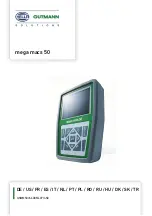
7
Switching Quality
High Noise Rejection From all Sources
Matching Standard Levels
With the coming of the LX-1 it is time to do away with outmoded patch cords and relays. The
Burk LX-1 provides versatile and foolproof operation and a cleaner audio path.
The LX-1 sets new standards for switcher audio performance. It uses noiseless “soft” switching to
give clean program transitions. Instead of the “chopping” action of relays, switches, patch cords
and typical electronic switchers, the LX-1 makes a controlled transition from one source to the
next. The turn-on and turn-off transitions are never audible as such. The audio simply appears or
disappears. This effect is particularly impressive when working from live or digital sources. Clean
audio appears out of dead silence.
When a channel is turned on, its audio is passed through the LX-1 with very low distortion,
typically a few thousandths of a percent. When a channel is switched off, the LX-1 yields typically
100 dB of isolation. This assures there will be no audible noise or crosstalk from fast forwarding
of tape or hot inputs. Off is OFF.
Not only is the LX-1 a very low-noise device, its extraordinary 100dB common-mode rejection
will reduce hum and noise from ground loops and station cabling. An important design goal was
achieving high noise rejection from unbalanced sources such as consumer CD and DAT machines.
This performance, and the ability to accept typical “HI-FI” levels, makes the LX-1 the best way to
integrate consumer and semi-professional equipment into a studio environment.
It is recommended practice to calibrate all distribution signals to a standard level, typ4
dBu. Unfortunately, manufactures do not always adhere to standards. For example, a cart
machine may be designed for “0” output level. Jumpers on the LX-l’s audio board for each
channel may be set to standard levels of-10, 0, +4 and +8 dBu.








































